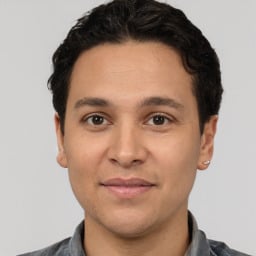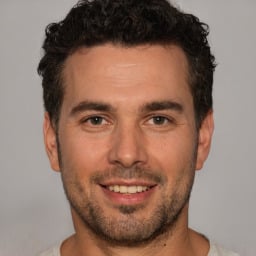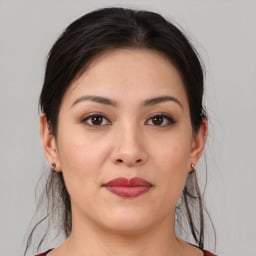Introduction to Learning Process
Learning is an ongoing process. It’s an act of modifying the existing knowledge, skills and ability. It also helps in increasing the knowledge of personnel at a workplace. Different learning processes and styles help an in self- assessment of personal development and progress. Learning styles like- bloom’s taxonomy of learning, VARK model and honey and Mumford’s learning helps the individual to identify the learning aspects. These styles also help an individual to handle the situations at health and social care. Effectiveness of these style helps in solving the situations in health & social care (Younie, Leask, and Burden, 2014).
Understanding the learning process in health & social care helps in understanding and handling the patients efficiently. This increases the learning in health & social care and also increases the personal development.
Task 1: bloom’s taxonomy of learning
Bloom taxonomy was propounded by Benjamin bloom in 1956. Taxonomy refers to classification. Hence, Bloom taxonomy generally refers to the learning objective or can say different types of learning. Basically bloom taxonomy classified in three domains of learning which are: cognitive, affective & psycho-motor (Simons, and Duffy, 2000).
First domain is cognitive domain- cognitive domain refers to the skills relating with the knowledge, comprehension & critical thinking about a particular point. It is conceptual in nature. Cognitive domain covers six categories-
- Knowledge: knowledge refers to recognize about the information, ideas or principles which were learned before.
- Comprehension: comprehension means summarizing the knowledge or describing in detailed.
- Application: application means using the knowledge to solve the particular problem by using techniques.
- Analysis: analysis means to separate, analysis or categories the gathered information.
- Synthesis: synthesis means to put together all the learning & to create a new meaning.
- Evaluate: evaluate means to make judgments about the information (Clark, and Sweller, 2011).
Second domain is affective domain- as the word suggests affective it means relating to emotions, manner in which things are deal with emotions. It is concerned with the values, attitude and emotions. Affective domain covers four categories-
- Receiving: receiving is something about recognizing. That it pays attention or not.
- Responding: responding means giving reaction by learners to a particular point.
- Organizing: organizing means putting things together i.e. values, knowledge, information which has been learned.
- Characterizing: it means that how a particular value or beliefs affects the behaviour (Stoll, Fink, and Earl, 2003).
Third domain is psychomotor domain- it involves physical movement or use of motor skills. These skills require practice. The seven categories are-
- Perception: perception means ability to use sense power. Each individual have different perception.
- Set: It means mindset, in which person responses to the situation.
- Guided response: it means proper strategy to support the response.
- Mechanism: it means basic proficiency. E.g. full medical checkup of patients.
- Other categories are Complex overt response, Adaptation and Origination.
Learning of concepts & principles within the cognitive domain has a very great importance in the health & social care (Wong, and Butler, 2012). As cognitive domain based on conceptual basis, so for a health & social care it necessary to have proper learning skills and ability. With the proper cognitive domain of bloom’s taxonomy it is helpful in health & social care. I.e. proper knowledge helps in attending the patients efficiently. Likewise comprehension of knowledge is also a necessary category in the field of health & social care. All the information regarding the patients is kept in the tabular form so that it may not get replaced.
There are some other theories of learning like behaviour & cognitive theories. Behaviour theory may be defined as theory which observes the changes in the behaviour of an individual. This theory of learning focuses that how an individual behave in the given situation (Shiffman, 2009). Behaviour theory includes two type of conditioning-
Classical conditioning: classical conditioning focuses on that reward should be present in order to get a response. Ivan Pavlov who propounded this theory makes an experiment on the dog that when he rang a bell then gave food to the dog. Second time he rang the bell and gave food to the dog. After repeating this experiment on dog he observes that dog started to salivate while bell rang. So this theory focuses that in order to get response some reward should be attached. While Operant conditioning: operant conditioning focuses on the learning that occurs through a positive reward or negative reward like punishment. B.F. skinner has said that in operant conditioning response is necessary to get the rewards. Here rewards may be positive or negative.
Cognitive theory is basically learning style which focuses on the visual learning or verbal learning (Simpson, 2010). This theory focuses that an individual will memorizes the symbols which are shown to them. Mostly cognitive theory includes symbols or verbal learning.
Behaviour theory and cognitive theory help in handling the situation in a health & social care. As if an individual in health & social care uses cognitive theory of learning then they would use their mental power and ability to solve the situation in the health & social care. Before taking any decision regarding the patients of health & social care they would always use their knowledge or may consult with the doctors. Cognitive learning mainly focuses on the mental power of own.
As if health & social care staff follows the behaviour theory than they would use their own ideas or beliefs to solve the problem of patients. This behaviour theory of learning may have some negative impact on the health & social care as because this theory suggest when there is any stimulus then there is reward (Naeve, Sicilia, and Lytras, 2008). This affects the behaviour of individual working over there. They would only help patients when they feel to help. This leads to lower the productivity. So in health and social care it’s important to have cognitive theory of learning.
Students may also like to read: LAW OF BLASPHEMY
Task 2
(a.)Honey and Mumford’s and VARK learning styles
Honey and Mumford’s learning styles was propounded by peter honey and alan mumford. They suggests that there are basically 4 learning styles that are-
- Activist: activists are those types of persons who learn by doing things. They are mostly open-minded person. They are the person who never says no. they are ready to learn anything. Their philosophy is that they want to do all type of work at least one time in life (Dealtry, 2004).
- Pragmatist: Pragmatists are person who put their theory in practice. They are very calm person; they try to solve each and every problem by open discussion. They are positive person. They search out all the ideas and knowledge.
- Theorist: theorists are the people who need graphs, proper facts, model or concepts in learning process. They are basically perfectionists.
- Reflector: Reflectors are persons who basically stand back and watch the things which are to be learned. They learn by visualizing the things. They enjoy observing people (Rennie, and Ortlieb, 2013).
VARK model of learning is the most popular style of learning. VARK learning style focuses on four learning style mainly-
- Visual learning: visual learning generally based on learning through visuals like graphs, presentation, movies, diagrams, video chatting. These are the modern tools and techniques of learning. Visual learning helps in memorizing the information.
- Auditory learning: auditory learning are based on learning through hearing information via discussion, seminars, lectures etc. these are the various forms of auditory learning. Auditory learning has a great disadvantage that is if they forgot what has been taught then they would not been able to recognize the information.
- Reading learning: reading learners are the one who learns through text books, newspaper, journals etc. they are the safest form of learning. As all the information are present in written form. E.g. If a nurse forgot the name of the medicine then they would prefer book to see the name (Noriega, and et.ol. 2013.).
- Kinesthetic learning: learning by doing or touching. This learning may be termed as physical doing of the task to learn them properly. E.g. touching the stethoscope to recognize it.
In health and social care basically visual, auditory and kinesthetic learning is being used. As by proper visualizing, nurses or interns in the health & social care practice the operations. Visual learning is best for the emergency operations.
Reading learning also helps an intern to memorize the knowledge. Reading learning are on proper paper pattern or text based patterns. E.g. if an intern checking a patients forgot about a diseases name then they would directly search the book for the name or may take some references.
For the social & health care its best to have kinesthetic learning because doing the work and learning is the best part to memorize the knowledge (Moreno, Morales, and Montes, 2005).
Maslow’s hierarchy of needs is the theory which basically focuses on the five needs of the individual. I.e. psychological need, safety need, social need, esteem need and self actualization need. These all needs of an individual are basically linked up with each other. If first need is not being satisfied than other need would not be satisfy. In health and social care Maslow need have both the impact negative as well as positive impact. Positive impact in the sense that all the staff in health & social care urges to work to get all the needs. They work to satisfy their needs and wants. And the negative impact would be they will not perform the duty as per the rules they will perform to attain the satisfaction level (Glanville, 2014).
(b.) factors that effects new learner
If a new auxiliary learner is being staffed in the mixed ward of elderly patients with various illnesses, this may affects the learning development of the individual. Mind of each patients are different in nature so it would be difficult to handle each patients with the same mental state. For removing this doctor may provide a mentor to the new auxiliary learner. Under which he learns how to handle and treat the patients. Or they can provide some training to the individual about the behaviour of all patients dealing in different illness.
The new auxiliary learner may also get affect by the communication problem of elderly patients. If a patient who has pain in the arm may tell the learner about the pain. Learner would give the painkiller. But if a patient having a heart problem and he is not in condition to tell the learner than it will lead to improper development of auxiliary learner (Waight, and Stewart, 2005.).
An auxiliary staff member who is new to the health & social care may get motivated by their seniors. An auxiliary learner is also a pragmatic learner which means he is full of positive thought and always ready to work in each and every situation. And as he has come with the negative past experience of learning he will feel motivated toward the work. Seniors may also make them familiar about the rules and regulation of the health & social care i.e. no mobile phones at workplace. As having a negative experience a pragmatic learner always feel motivated towards the work.
Senior manager or doctor may brief them about the staff, the laws regarding the health & social care, code of conduct that has to follow at the workplace (Crowther, 2014.).
Task 3: learning programme on stress management & time management
Stress management, time management and communication these are essential factor in the learning activity. Learning activity should include management of proper stress, communication and time. Stress is a negative term which affects the productivity of an individual. Stress directly affects the productivity of the employee who is working in the health & care. Stress on medical practitioners may also leads to burst of their anger on the patients. Which may sometime leads to improper treatment of the patients. They may not able to work properly in the stress situation. A supervisor should develop a learning programme on stress management i.e. they may conduct meditation classes for half an hour. This would help them in reducing stress. Or can provide training and development classes to remove the stress and increase level of work. Same they have to develop plan for time management by prioritizing the work, delegating unwanted work to subordinates or other staff, manage time by checklist method these all are the activities relating to time management. Programme for time management also help an interns or auxiliary learners to handle patients of health & care effectively. By proper time management programme learner would easily allocate time to each and every patient. Developing Communication activity also help learner. If a learner is being taught the way of communication in the health & service staff then he would follows that plan regularly. The essential consideration would be regarding the stress management because a learner should not work in the stressful situation. So stress management must be necessary (Sanmart´I, Arca, and Acher, 2006.).
Strategies and the techniques that would ensure successful outcome for a group of learner, organization & service user would be-
Seminars: By programming seminars it would help all the people in the health & social care sector. Seminar provides brief lectures on the topics. They help the learners to avoiding the stress, it helps an organization to attain the maximum growth and for service user they would help in form of service which a doctor gives.
Trainings: by giving training on the above programme also help in positive term. Training leads to increase its efficiency of attending the patients. Training helps an organization to attain effective growth by minimum wastage, it also help organization to achieve its basic objective i.e. to satisfy all the patients, fair treatment to each and every patients etc. it also helps the service user to that by proper training the auxiliary learners would treat patients positively. They understand the emotions of the patients.
Discussion: discussions also help in overcoming the negative aspect of the learning outcome. By proper discussion learner would get knowledge about the work done and handling patients, making the medical report of each and every patient. It helps an organization to achieve growth.
The strategies which have been suggested are the best choice for the learning programme because with the proper discussion they get ideas and suggestion from all the doctors and learners (Wirth, and Perkins, 2005). This is an effective strategy to develop the future programme. Discussions help the organization to be effective in the decisions making. By proper discussion learners get proper ideas to do the work. Discussion also helps in getting suggestion from all the doctors & patients.
Proper communication also helps an interns & doctors to attend the patients effectively. Communication plays an important role in the programme development plan because with the proper communication doctors should understand the patient’s problem and provide them good medical prescription. It also helps in understanding the behaviour of different patients and handles them effectively.
Task 4:The teaching strategies that senior auxiliary to support the new employees.
Newly medical practitioners employed in the health care home should face many problems like- Attending patients ineffectively. Newly medical practitioners also face the problem regarding the behaviour of different patients because he may not attend all patients in the same manner. The senior auxiliaries should follow various teaching strategies to support the new employees on the job that are:
Training: To give support to the new employee on the job. Senior manager or senior auxiliary should provide proper training to the newly medical practitioners. This helps in attending patients properly. Training to the medical practitioner also helps in dealing with the behavior of all the patients. It leads to work efficiently with minimum mistakes.
Mentoring: mentoring is the informal transmission of knowledge and idea to the member who are under them. Mentoring helps in giving proper practical knowledge to the newly employees.
Kinesthetic: kinesthetic is the learning style which helps the new learners to learn at faster rate. Kinesthetic is the technique which involves physical doing of the work. This technique is best for the medical practitioner to adopt as a learning technique (Dealtry, 2004).
Collaborative learning: collaborative learning means learning in the team. A group of all the new employee work together to accomplish the goal of the health care home. They are not the permanent group; they just form for the purpose of learning.
For the enhancing the learning needs newly employed worker in health & care. The senior medical practitioners should give them proper feedback regarding the performance of the new worker in the health care. Proper feedback will ensures that he is treating the patients properly. Proper feedback also ensures that newly employed worker is smart enough to use its skills & ability to handle the patients. Proper planning of the newly medical worker that he will attend which patients also helps in enhancing the learning needs of the employees. Planning assures the proper plan to attain the goals and objective of the health & care. With proper plan i.e. which patient he has to attend & what are the duties? Proper planning assures all these questions (Shiffman, 2009.).
The newly employee worker are also self motivated to do the work in the medical health care home. They contribute their best to adopt these approaches of the learning by their senior auxiliaries on the job.
Students may also like to read: Public Health Practices - WHO
CONCLUSION
This report has suggested the various learning processes by which a new employed worker may contribute his best in the health and social care home. Various learning processes or theories include: bloom’s taxonomy, VARK model and honey and Mumford’s learning styles. These all styles have been described to analyze the link between these concepts and the newly employed learner. This report also focuses on the teaching strategy which has been used by senior medical practitioners to support the new employee on the job. These all strategy helps in enhancing the learning style of new employees of the health care home.
REFERENCES
- Younie, S., Leask, S. and Burden, K., 2014. Teaching and Learning with ICT in the Primary School. Routledge
- Simons, R., Linden, J. and Duffy, T., 2000. New Learning. Springer Science & Business. academic press
- Clark, R., Nguyen, F., and Sweller, J., 2011. Efficiency in Learning: Evidence-Based Guidelines to Manage Cognitive Load. John Wiley & Sons
- Stoll, L., Fink, D. and Earl, L., 2003. It's about Learning (and It's about Time). Psychology Press
- Wong, B., and Butler, D., 2012. Learning about Learning Disabilities. Academic Press
- Shiffman, D., 2009. Learning Processing: A Beginner's Guide to Programming Images, Animation, and Interaction. Morgan Kaufmann
- Simpson, K., 2010. The Learning Process: Some Creative Impressions. Strategic Book Publishing


























